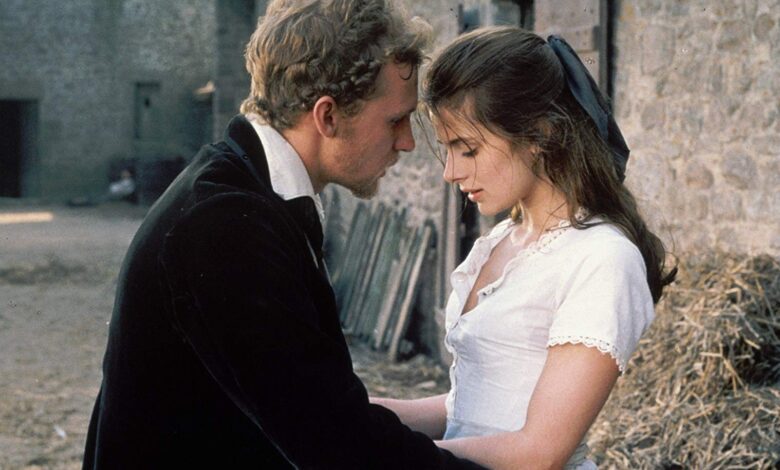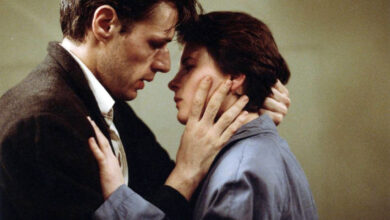Tess (1979): “She was pure… until the world touched her.”

A Virgin in the Lion’s Den
In Tess, Roman Polanski doesn’t just adapt Thomas Hardy’s classic—he undresses it. Slowly. Tenderly. Then cruelly. The film becomes a cinematic striptease of morality, virtue, and the eternal punishment of beauty. From the first moment we see Tess Durbeyfield—played with haunting vulnerability by Nastassja Kinski—we know she’s doomed not by her sins, but by her sheer existence. She is temptation born of innocence. The kind of woman who makes even purity feel profane.

Where Flesh Becomes Fate
Tess is not a victim of lust. She is the object upon which lust festers.
When Alec d’Urberville enters the scene, it’s not seduction—it’s predation. His gaze devours her. The camera lingers on her skin like a voyeur, making us complicit in this unholy hunger. One kiss. One night. And Tess is no longer untouched—not by choice, but by force. Polanski does not sensationalize her violation; he immerses us in its aftermath—the shame, the silence, the unbearable stillness of violated girlhood.
But the true tragedy isn’t what happens in the woods. It’s what happens afterward.
Enter Angel Clare. Beautiful, idealistic, and hypocritical. He falls in love with Tess’s soul, only to flee from the truth of her body. For a woman like Tess, love is conditional—on her purity, her past, her silence. And when she tells the truth, when she dares to confess her “impurity,” Angel recoils. He doesn’t touch her. He abandons her. The man who claimed to love her spirit was only in love with the untouched flesh of an illusion.
The Body on Trial
Tess is soaked in the sweat of unspoken desire. Every frame worships her body—its curves, its movements, its fragility under the male gaze. Nastassja Kinski’s performance is not loud; it’s dangerously quiet. Her eyes say everything. She walks like someone who has already been claimed—yet refuses to belong to anyone.
The film does not ask whether Tess wanted it. It asks how many men believed they deserved her.
There is something biblical in her journey—Eve cast out of Eden not for eating the apple, but for being the apple. In Hardy’s world (and Polanski’s), beauty is not a blessing. It is bait. And Tess is the lamb hung for slaughter, bleeding virtue into the soil of England’s countryside.

Her Flesh, Her Sentence
In the final act, Tess becomes both martyr and monster. She does what the world refused to do—punishes the man who destroyed her. She sleeps with her violator. Then kills him in cold blood. Not for pleasure. But for justice. Or maybe revenge. Or maybe both. In that moment, her purity is reborn—not as chastity, but as choice.
Polanski’s Tess ends not with redemption, but with a corpse and a cold sunrise. She is led to the gallows like a lamb again, her body no longer hers, but a symbol.
A warning.
A temptation.
A relic of what happens when a girl dares to live in a world where men believe her body is theirs to define.
Tess (1979) isn’t just a film. It’s a requiem for ruined women—silent, slow, and unbearably sensual. It doesn’t just tell you she was pure. It dares you to question what “pure” ever meant.





